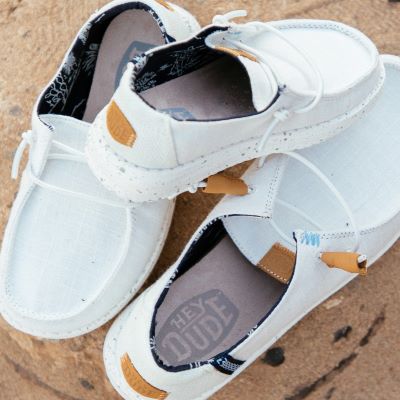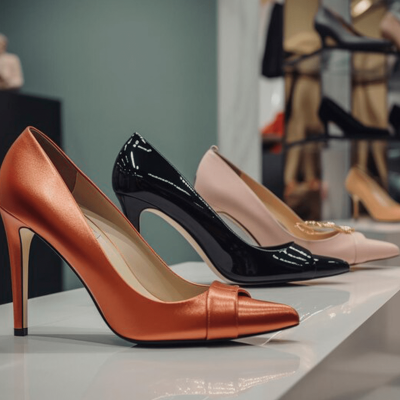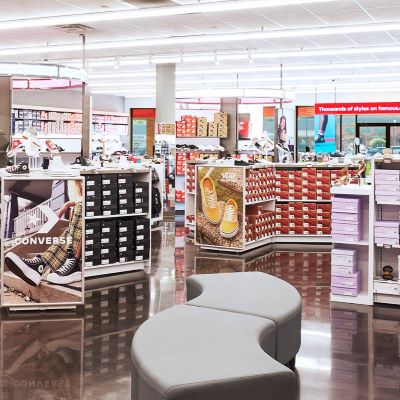Register to continue reading for free
2023: a year of mixed results in casual and outdoor

In a challenging year for retail, marked by high inflation and weaker consumer demand, we looked at how some of the key players in the casual and outdoor segment are faring and whether some may be poised for a comeback
Casual Segment
Crocs defied the slowdown in the fashion retail sector in 2023, with sales up by 11.5% to 3.96 billion US dollars and net income up by 46.7% to 792.57 million US dollars. The comfortable clogs remained popular even as sales declined, particularly in Europe and the US. However, the outlook for 2024 is cautious due to the performance of the Heydude brand, which was acquired in 2023 and is now the focus of the company’s efforts to position it for its next phase of growth. This is the mission of Terence Reilly, who has been appointed Executive Vice President and President of the brand and recently rejoined Crocs.Like Crocs, Deckers grew across all channels and regions in the third quarter of its fiscal year, posting a 16.0% year-over-year increase in sales to 1.56 billion US dollars and a 39.9% year-over-year increase in net income to 389.9 million US dollars, and raising its full-year guidance as a result. At the heart of this growth is the athletic brand Hoka, which is “in its strongest position to date”, said Dave Powers, Chief Executive Officer and President of Deckers Brands, commenting on the appointment of Robin Green as the brand’s next President.
The owner of the DSW retail chain and brands such as Camuto, Keds, Topo and Le Tigre, however, has struggled in 2023. Designer Brands’ annual sales declined by 7.3% year-on-year to 3.07 billion US dollars and profits narrowed from 162.7 million US dollars a year earlier to 29.2 million US dollars, due to a “softening footwear market”, a “highly promotional retail environment” and even “the impact of unseasonably warm weather on our seasonal footwear business” in the last quarter. However, the company is optimistic about a rebound in 2024 and raised guidance following sustained quarterly improvement last year.
The same sustained quarterly improvement was seen at Caleres, which, although it ended last year with sales and net income down 5.1% and 5.7% respectively on the previous year, believes it is now better positioned for long-term sustainable growth. Caleres CEO Jay Schmidt highlighted the company's “durability of earnings power” and three consecutive years of exceeding earnings per share targets. Therefore, despite a cautious outlook on the footwear market, inflation, and freight costs, the company expects its net sales to at least come out of the red (flat to up 2% year-over-year) in 2024.
Outdoor Segment
Turning to the outdoor segment, major companies such as Wolverine Worldwide and VF Corp cannot claim that 2023 has been a generous year. After several quarters of losses, both companies have launched aggressive strategic transformation plans to revamp their brand image and return to profitability.Merrell and Saucony’s parent company, Wolverine Worldwide, saw sales fall by 16.5% year-on-year to 2.24 billion US dollars in 2023. However, the company achieved a significant turnaround, narrowing its net loss by nearly 79% to 39.2 million US dollars, compared to 188.3 million US dollars in the prior year.
According to Chris Hufnagel, President and Chief Executive Officer of Wolverine Worldwide, “We finished the year with revenue and earnings in-line with guidance, and inventory and debt levels better than expected”, no doubt thanks to months of aggressive divestitures (Keds and Sperry, for example) and cost-cutting measures. Having largely completed the stabilisation phase of the turnaround, Hufnagel said he expects the company to drive “an inflection of growth in the back half of 2024”, with its core brands accelerating into 2025.
VF Corp struck a cautious tone after its third quarter results, with sales down by 16.2% to 3.0 billion US dollars and profits completely reversing to a net loss of 42.5 million US dollars, a 550.3 million US dollars swing from the profit of 507.8 million US dollars in the same quarter last year. CEO Bracken Darrell acknowledged the disappointing performance, stating. “Our third quarter top-line performance was disappointing”, admitted Bracken Darrell, President and CEO. “However, we are confident the actions we are implementing as part of Reinvent will enable VF to stabilize and then grow revenue and improve operational performance across brands and regions”.
At the heart of VF Corp’s turnaround plan is the revival of two key areas: the Vans brand, which is facing a challenging period, with third-quarter sales down by 28% year-over-year, and the struggling US business, where sales fell a steeper 24% year-over-year as compared to the international market (down by just 5% year-over-year). In a conference call with analysts, no timeline was given for any concrete improvement (footwearnews.com), so it’s safe to assume that the next quarter may not bring any concrete news. Meanwhile, the company has also launched an in-depth strategic review of the brand assets within its portfolio.
Finally, let’s have a look at Columbia Sportswear, whose “2024 has started out broadly in line with our expectations”, according to Tim Boyle, the company’s president and CEO. In the three months to the end of March, the company reported a 6% year-over-year decline in net sales to 770 million US dollars, largely due to weak demand in the US and Canada and retailer caution, and an 8% year-over-year decline in net income to 42.3 million US dollars. With a more secure financial position, Columbia is holding out hope for “warmer weather” as a reward for its investment in new, technologically enhanced products. It remains to be seen what’s in store for the company in the remainder of the first half.
Image Credits: fashionnetwork.com








